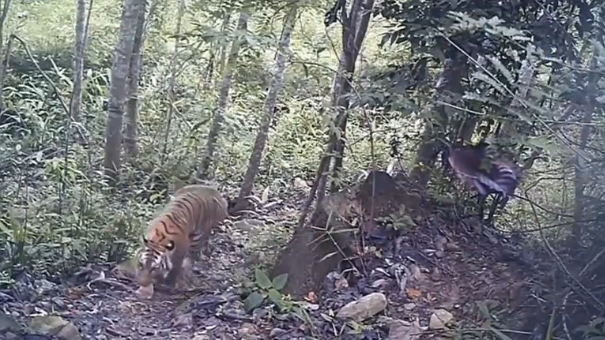
THAILAND (Reuters) — Footage of Indochinese tigers and their cubs have been captured in Thailand’s eastern jungle, confirming the world’s second breeding population of the critically endangered cats is there, wildlife conservationists said on Wednesday (March 29).
Evidence from 156 camera traps documented at least six cubs from four female tigers in the country’s eastern jungle – the first evidence of tigers breeding in the eastern area in more than 15 years. The cameras that captured the cubs were installed by Thailand’s Department of National Parks, Wildlife and Plant Conservation (DNP), Freeland, a counter wildlife and human trafficking organization and Panthera, a global wild cat conservation group.
“It provides a little bit of hope that potentially, we no longer have all of our eggs in one basket,” Eric Ash, a conservation project manager at Freeland, told Reuters.
Previously, the only known breeding population for Indochinese Tigers was in western Thailand.
In Asia, tigers are subject to extreme poaching for their skin and body parts which are used in traditional Chinese medicine, a multi-million dollar business that has driven tigers in the wild to the brink of extinction.
Only about 3,900 tigers are believed to be left in the wild globally and only about 350 are of the Indochinese species which lives in Thailand and Myanmar, according to 2011 figures by the International Union for Conservation of Nature (IUCN).
Conservationists hailed the discovery as an indicator of successful patrol and protection efforts by Thai authorities against illegal poaching and rosewood logging.








